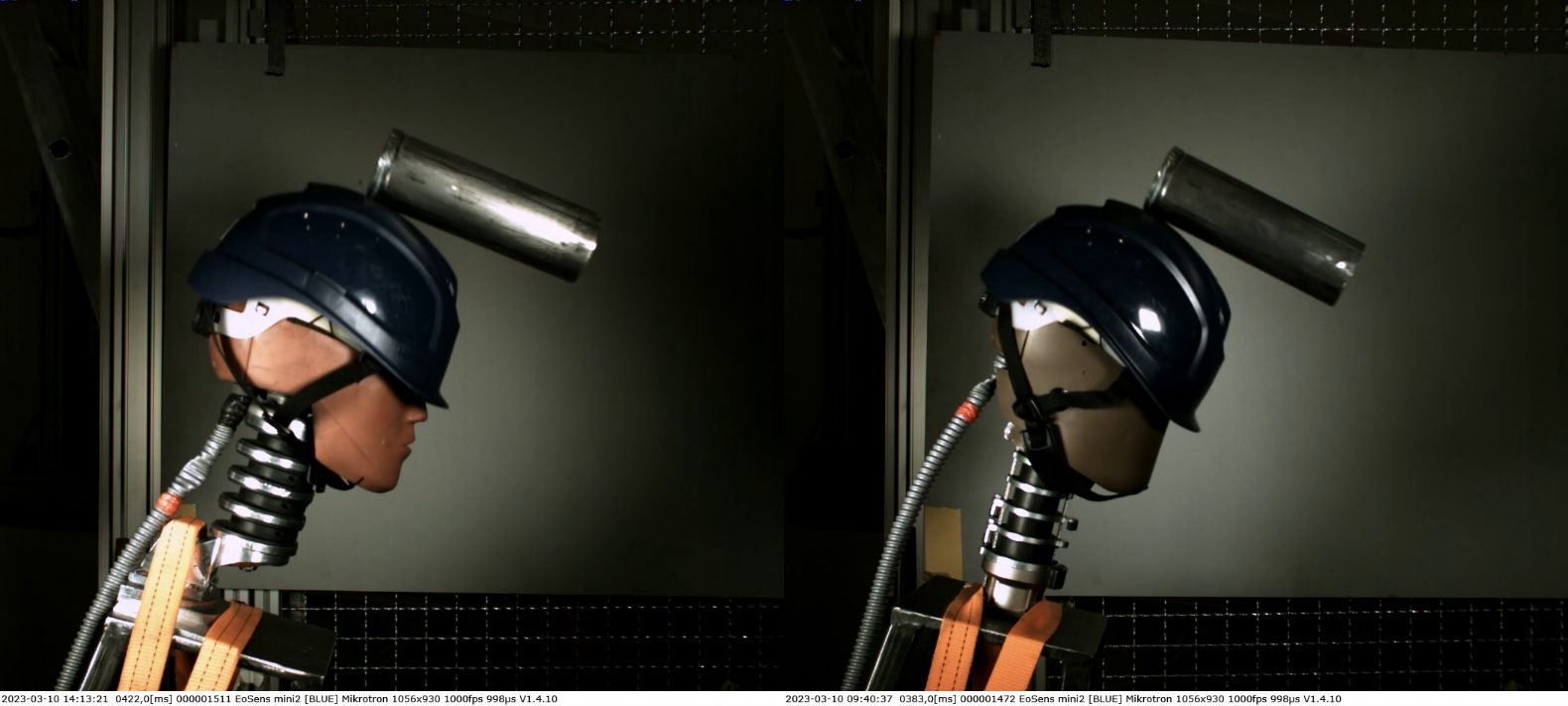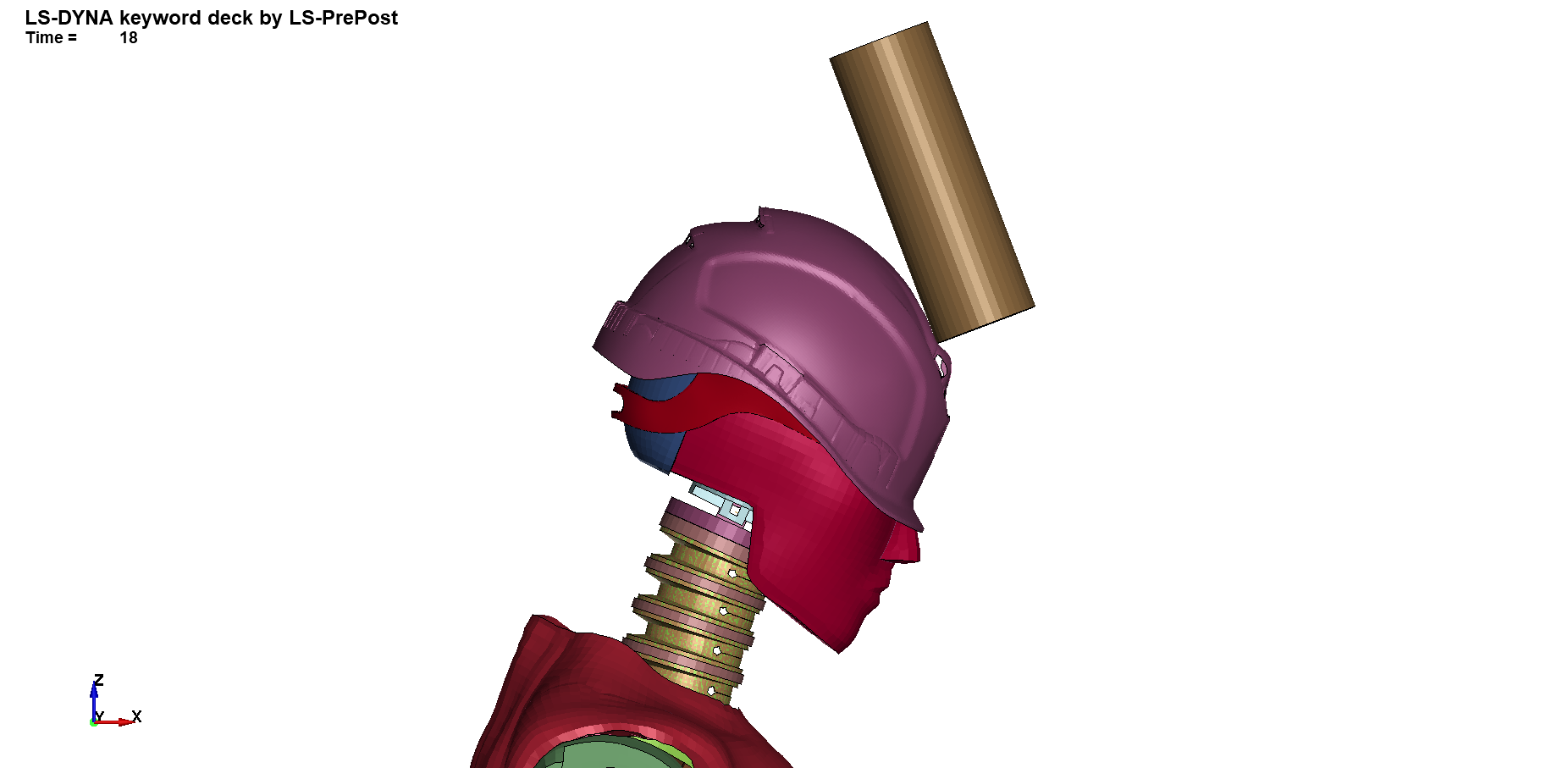The Influence Of The Neck On Head Kinematics After An Impact From A Striking Object

At Mips, our vision is to reduce head injuries and save more lives. Therefore, we are interested in what happens in the head during a realistic accident scenario. To increase our understanding of impact dynamics and helmet protective properties we want to mimic what happens in reality and not only test helmets according to standard. In the case of a falling object that impacts the head from above, the standard test method uses a rigidly mounted head form to measure the linear forces transmitted from an object striking the center of the helmet.
This setup does not allow for any motion of the head and thus no accelerations can be detected, neither linear nor rotational. Since rotational motion is a major cause of concussions and other severe injuries, a test method needs to enable the measurement of linear and rotational motion to evaluate the risk of such injury.
The most common injury criteria for head and brain injury look at the head kinematics (accelerations and velocities) and thus, we at Mips are looking for a test method that allows the head to move in both linear and rotational motion when the helmet is impacted from above. We have tested surrogate dummies of two different types, the Hybrid III crash dummy, and the Thor crash dummy. In the comparison test, we only used the neck and head from each dummy to minimize the boundary effects of the rest of the dummy.

With both test dummies, we have seen reductions in the head rotational motion and the strains in the brain when a Mips low friction layer is used as compared to the same helmet but without the low friction layer. It is also visual from the high-speed video captured that the rotation of the head was less for the low friction layer helmet.
There is a concern that none of these surrogate necks are developed for the vertical loading generated in a striker test, such as the one tested at Mips. They are both too stiff and inflexible to catch the correct behavior of a human head and neck. However, our tests showed that the Thor dummy is more flexible and showed larger head rotations than the HIII dummy.
To evaluate how much flexion and motion a real human head and neck would have shown in this impact scenario, simulations have been performed with numerical models of the Thor dummy, HIII-dummy, and a human model, the KTH model. These simulations showed that both surrogates moved less than the human neck and thus predicted less risk of injury compared to the more realistic human neck. However, all three alternatives showed a reduction in risk of injury, based on rotational velocity and strain, when a low friction layer was incorporated in the helmet.

